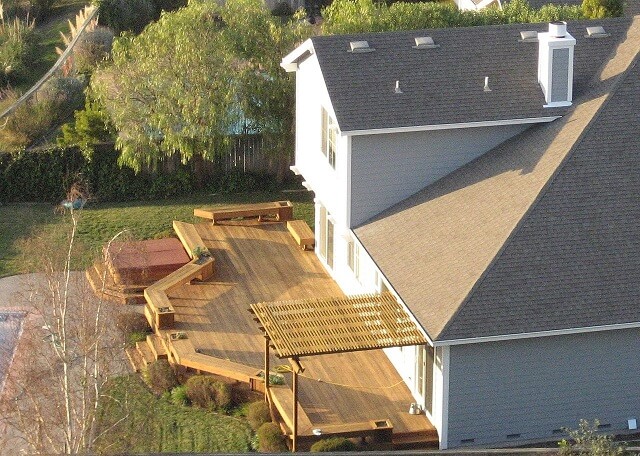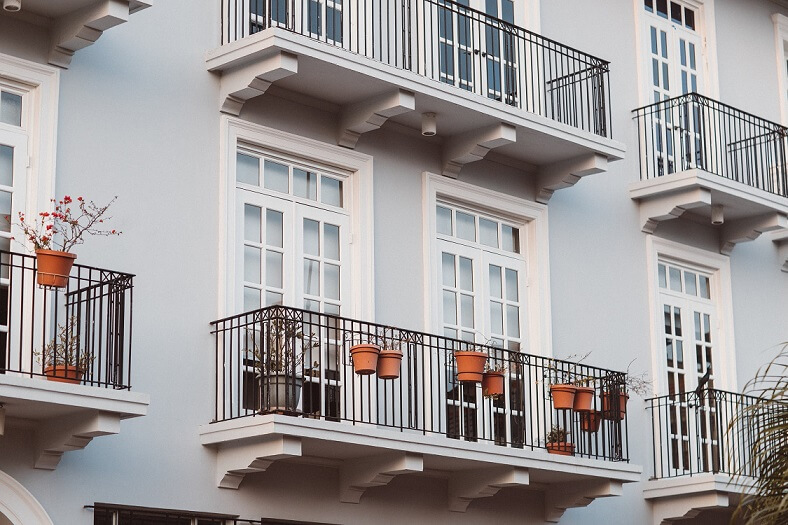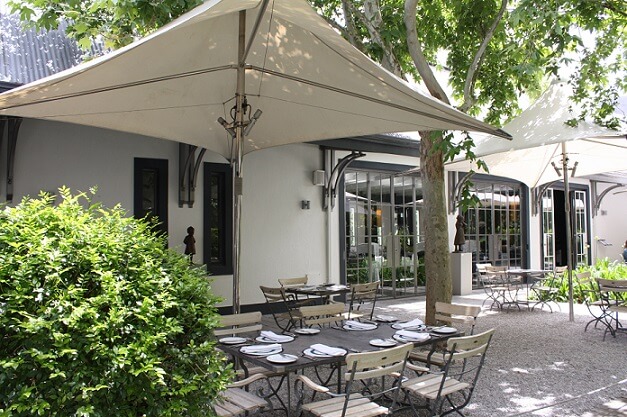What are decks, porches, balconies, verandas, and patios?
Decks

Decks are usually built above ground, open to the air with no roof, and are attached to the back of the house overlooking the backyard. Unless situated right at ground level, you will probably want a railing around the deck. Depending on how high the deck is raised off the ground, a railing may be required by local bylaws or by your insurance company. You don’t want your friends or family falling off.
Decks are normally designed to be fairly large, compared to a balcony, and can hold several people for parties or barbecues. They’re often accessible directly from the house by a sliding glass or French door. In other cases, you access the deck by a stairway from the backyard.
Porches

Remember when all houses seemed to have a front porch? Porches are typically made of wood, and provide a covered entrance to the front door of the home.
In the old days, people used to sit out on their porches and visit with their neighbours as they passed by. For many years, porches seemed to have fallen out of favour. However, they now seem to be making a comeback in some areas. In the US, according to the Census Bureau Report, 33% of new single family homes built in 2019 had porches, compared to 1993 when only 41% had porches. This just might be an indication of a desire for more social connection, according to some.
In many Victorian style homes, the porches are actually big enough to plan a social gathering, however, today, most porches are small, and simply add to the visual appeal of the home.
Balconies

A balcony is attached to or is projecting from, an upper floor of a building, and it is always surrounded by a railing. Balconies give residents of the home some access to the outside but are usually too small to actually have any kind of social gathering. In some cases, they can be as large as a deck, but the difference is, they can’t be accessed from the ground. Very small balconies are referred to as “Juliet” balconies. Remember “Romeo, Romeo, where art thou, Romeo?”
Verandas

A veranda, sometimes spelled “verandah,” is like a narrow, railed, and roofed deck in the front of the house, and extending down the sides. They provide a cool, shaded area to sit, relax, and watch the world go by. You often see verandas on Queen Anne and craftsman style heritage homes.
Patios

A patio is a ground level area, often made of concrete or paving stones, usually used for dining and relaxation. It may or may not be accessed by patio doors, and is generally open to the air, with no roof.
How do decks and patios work?
Decks, patios, and the like serve to expand your living area by providing you with an outdoor living space. Patios, at ground level, work well when the ground is fairly level. But if your front or backyard is sloped or hilly, or you want to walk directly out of your house, then a raised deck may be a better option. When deciding on what type of material to use when adding a deck, there are so many different options based on your budget. Decks can be made of pressure treated wood, PVC, cedar, redwood, or composite material (usually made of wood fiber and polypropylene). Some types of materials are better in hot, dry climates, where others may hold up better when exposed to a long, cold or wet winter.
Interested in the idea of building a patio or deck for your home? When deciding on the type and size of deck you want, there are many things to consider besides the right type of material and budget:
How do you plan to use your deck or patio? If you’re planning to have a large table and lots of chairs for entertaining, as well as a barbecue area, make sure you leave enough room for people to pass behind the chairs, without falling off the deck or squeezing against the railing. You may want to consider building a bench along the railing for additional seating. Or putting a wide cap on the top of the railing, where guests can set their drinks.
How much weight will it need to support? If you do plan on having lots of guests, or if you want to install something heavy, like a hot tub, you’ll need to consider beefing up your support structure.
Verandas and porches on the front of the home also act as a social gathering place, as well as a great place to do some people watching.







